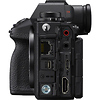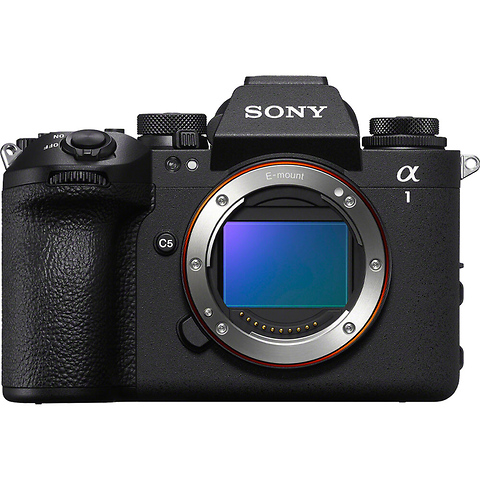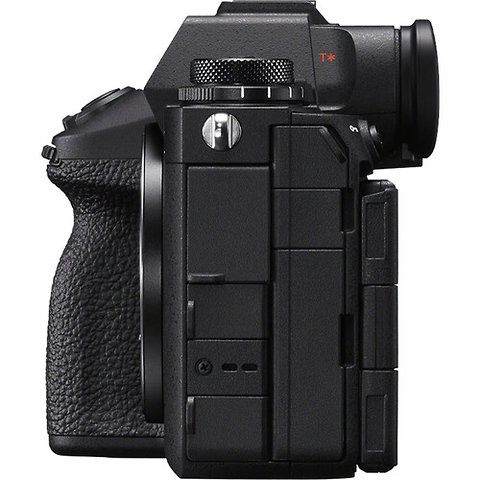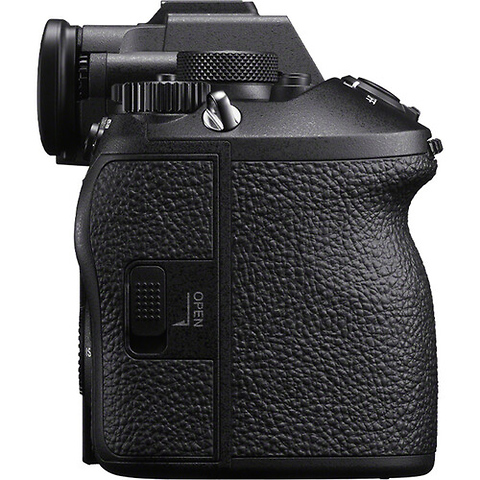My Cart

Where can I use my Samy's Camera Credit Card?
Your Samy's Camera Credit Card can be used to make purchases online, at samys.com, or at any of our Retail Locations.
What are the current special financing offers?
6 Month Special Financing* on orders totaling $199 and above.
12 Month Special Financing* available on orders totaling $599 or more.
Order minimum excludes sales tax, shipping fees, and discounts. To receive special financing, simply pay with the Samy's Camera Credit Card and select the financing option during checkout.
How will I receive my Samy's Camera Credit Card Information?
Applying for an Samy's Camera Credit Card is fast and easy. The application is subject to approval by Synchrony Bank. If approved, we'll automatically add your Samy's Camera Credit Card to your account at checkout. Select the Samy's Camera Credit Card under the payment information to pull up your available account information. You will receive your Samy's Camera Credit Card in the mail within 7-10 business days after applying.
How can I manage my account?
For Samy's Camera Credit Card accounts, you can pay your bill online or modify your account settings by clicking here:
My Account
Can I ship to an alternate address?
All orders must be shipped to the billing address on file for final approval of transaction. We can not ship to an alternate address.
Pay By Phone:
Contact Synchrony Customer Service 24/7 at (866) 396-8254.
Pay By Mail:
To ensure your payment is on time, mail in advance of the payment due date. Send payment to:
Synchrony Bank
P.O. Box 960061
Orlando, FL 32896-0061
Samy's Camera Credit Card, issued by Synchrony Bank.
No Interest if Paid in Full Within 6 or 12 Months*
On purchases of $199 or more (6 months) or $599 or more (12 months) made with your Samy's Camera Credit Card. Interest will be charged to your account from the purchase date if the promotional balance is not paid in full within 6 or 12 months. Minimum monthly payments required.
*All orders must be shipped to the billing address on file for final approval of transaction. Qualifying purchase amount must be on one receipt. No interest will be charged on the promo balance if you pay it off, in full, within the promo period. If you do not, interest will be charged on the promo balance from the purchase date. The required minimum monthly payments may or may not pay off the promo balance before the end of the promo period, depending on purchase amount, promo length and payment allocation. Regular account terms apply to non-promo purchases. New Account APR is 29.99%/Minimum Interest Charge is $2. Existing cardholders: See your credit card agreement terms. Subject to credit approval by Synchrony Bank. We reserve the right to discontinue or alter the terms of this offer anytime.
**For new accounts: Purchase APR is 29.99%; Minimum Interest Charge is $2. Existing cardholders should see their cardholder agreements for their applicable terms.
The Sony Alpha 1 II Mirrorless Digital Camera Body gives users everything they need to achieve a higher capture success rate and more, including 50MP high resolution, AI-based subject recognition AF, high-speed continuous shooting, and an advanced workflow from capture to delivery that provides professionals with unrivaled efficiency and freedom.
FEATURES:
A fusion of leading technologies delivers overwhelming performance - The massive volume of data from the 50.1 megapixel full-frame Exmor RS image sensor is processed in real time by Sony's BIONZ XR image processing engine. An advanced AI processing unit applies high-level subject recognition to reliably recognize a wide range of subjects. These state-of-the-art technologies make it easy to capture even the most challenging subjects in extraordinary resolution, with blackout-free viewing and full AF/AE tracking at up to 30 fps.
An advanced AI processing unit achieves high-level subject recognition - The α1 II features a dedicated AI processing unit that helps to recognize people more accurately based on human pose estimation and supports recognition of a wide range of subjects other than people, such as animals, vehicles and insects, with high accuracy. This results in a dramatic improvement in Real-time Recognition AF and Real-time Tracking capability, and higher overall AF performance.
Human eye recognition improved by up to approximately 30% - Real-time Recognition AF has improved human eye recognition by approximately 30%, and its human pose estimation technology also delivers precise recognition of subjects facing away from the camera, wearing sunglasses, or with the face obscured. Recognition of distant human subjects occupying only a small part of the frame has been notably improved, so approaching subjects are recognized and tracked sooner. Subjects can also be tracked better across occlusions among many people.
A wide variety of subjects accurately recognized - A wider variety of subjects is now recognized for stills and movies, with a new [Auto] mode letting the camera select. Recognition of animals overall is improved by approximately 30%, with eyes of some small animals added, and the eyes, heads and faces of animals like dogs and cats recognized. Recognition of birds is improved by 50%.
AF tracking response settable to match subject speed changes - Fast Hybrid AF combines phase detection and contrast detection for superb speed, precision and tracking performance. 759 phase-detection points cover 92% of the image sensor. The AF tracking response for stills can now be selected from [Stable], [Standard], and [Responsive] to suit the likely subject motion, useful for example in bird photography. High AF precision is achieved right down to light levels as low as EV-4.0 in AF-S mode, with improved contrast AF response.
Flexible focus area settings - XL and XS focus area spot sizes are now available in addition to the existing L, M, and S. XS can be useful to avoid focusing on foreground objects such as branches. It is also possible to create a custom focus area of specified size and aspect ratio, useful in situations like a track event where athletes are lined up side-by-side and you want to focus on the leading runner.
Selectable release time lag - Selectable release time lag modes are available via the [Release Lag] / [Start Display] menu. With blackout occurring on only the first image in a continuous burst, [Fastest Release/On] provides the shortest possible release time lag, while [Stable Release/On] minimizes variations in release time lag making it easier to release the shutter at the intended moment. The default [Auto/Off] setting gives no blackout when shooting is started.
High-speed continuous shooting at full 50.1 MP resolution - High-speed continuous shooting at up to 30 fps with full AF/AE tracking is possible at a stunning 50.1 MP resolution, with up to 120 AF/AE calculations per second on the data from the image sensor. Blackout-free shooting with no loss of viewfinder image allows seamless framing and capture of the subject as if viewed with the naked eye.
Pre-Capture and Continuous Shooting Speed Boost - Pre-capture retroactively captures moments that occurred before the shutter was released, without compromising resolution, even when shooting continuously at up to 30 fps with selectable recording time options. Continuous Shooting Speed Boost can temporarily change the burst speed. Both features reduce the chance of missing that vital instant.
Stunning resolution with 50.1 megapixels - Sony's extensive high-performance G Master line work with the 50.1 megapixel Exmor RS image sensor and BIONZ XR image processing engine to create deep, lifelike, high-resolution rendering. The sensor's high pixel count means that resolution is still a very impressive 21 megapixels (approx.) when shooting in APS-C mode or cropping to APS-C size after shooting.
Selectable RAW image size and quality - Compressed, Uncompressed, and high-compression Lossless compressed RAW still images are provided. Compressed RAW images can be shot continuously at up to 30 fps. Three Lossless compressed RAW image sizes can be selected to suit the application: L, M, and S. Lossless compressed RAW, JPEG, and HEIF images in M and S size have the same number of pixels whether shot in the full-frame or APS-C mode, making it possible to seamlessly switch modes while maintaining the same image resolution. JPEG and RAW sizes can be freely mixed and matched to meet the needs of the application.
High sensitivity, low noise, and wide dynamic range - Feedback from professionals has been taken into account to create noise reduction that is highly effective without sacrificing image detail, so users can shoot clear images of indoor sports at mid to high sensitivity without hesitation. Dynamic range at lower sensitivities is an impressively wide 15 stops for smooth, realistic gradations.
Consistently accurate exposure and color - Exposure and color reproduction are notably improved compared to the α1. The AE algorithm detects faces and optimizes exposure for stills and movies. Exposure stability has been improved by approximately 20%, even when the face is backlit and dark, or over-illuminated in direct sunlight, or not facing the camera. Working with a "Visible Light and IR Sensor" on the front of the body, the advanced AI processing unit helps to achieve accurate white balance even where the subject is in shade.
Optical 5-axis image stabilization achieves 8.5-step performance at the center - A high-precision image stabilization unit, advanced gyro sensors, and leading-edge algorithms detect and correct camera shake, achieving a groundbreaking up to 8.5-step effect at the center and 7.0-step at the periphery, and transforming handheld shooting with precision down to the single-pixel level and the finest subject details. With compatible lenses that include built-in stabilization, improved body-lens synchronization provides effective blur control even at otherwise problematic telephoto focal lengths.
Composite RAW modes for lower noise and higher resolution - The NR Shooting Settings mode captures between 4 and 32 RAW images which can then be composited using Sony's Imaging Edge Desktop application to create a full-resolution image with very low noise even at mid to high sensitivities. Pixel Shift Multi Shooting captures 4 or 16 pixel-shifted images that are later composited with the same PC application to achieve overwhelming resolution in a single image.
Real-time Recognition AF for movies - Real-time Recognition AF utilizes advanced AI-based human pose estimation technology that recognizes and tracks not just eyes, but body and head position for human subjects with high precision. The range of subjects recognized with AI assistance, for both movies and stills, has been expanded relative to the α1, and now includes birds in movies for example. Other subjects are acquired and tracked in real time by processing color, pattern, and spatial data.
High-resolution 8K /4K recording for impressive realism - 4K (3840 x 2160) movies can be cropped and edited from 8K source footage with overwhelming resolution from 8.6K oversampling. 8K 4:2:2 10-bit XAVC HS recording with optional Full HD proxy is available, as are 4K recording in XAVC HS, S, or S-I formats in full-frame, or Super 35mm size oversampled from 5.8K with full pixel readout and no pixel binning. XAVC S-I allows recording at up to 600 Mbps for outstanding image quality.
High frame rate recording at up to 120p - 4K can be recorded at up to 120p right in the camera. 4K footage can be played back in up to 5x slow motion. The Slow & Quick Motion (S&Q) mode makes it convenient to play recorded footage back at slow or high speed in the camera. Full HD footage recorded at 240 fps offers even greater range: up to 10x slow motion (24p) to create impressive sports movies, for example. The frame rate setup menu allows intuitive selection of frame rates.
Better S-Log matching with Cinema Line cameras - The S-Log3 gamma curve emphasizes gradation characteristics from shadows to mid-grey (18% grey). Minimum ISO when shooting S-Log is 800, while the expanded ISO range is 200 - 640. Compared to the α1, detail reproduction has been improved and footage can be more easily matched with the output from digital cinema cameras that also offer S-Log3 such as Sony's VENICE and BURANO. The ability to import User LUTs into the camera makes it easy to get an idea of the final post-edit look right in the camera.
Dynamic active Mode stabilization - In addition to standard mode, Active Mode combines a precision image stabilization unit and gyro sensor, while Dynamic active Mode adds electronic stabilization for an additional approximately 30%, enabling stable recording even when the user is jogging.
Auto Framing automatically adjusts composition for the subject - Using AI-based subject recognition technology, Auto Framing automatically crops the frame to keep the subject in a prominent position when shooting movies. The framing is continually adjusted so that the recorded footage looks like the subject was being followed by an experienced camera operator. The timing at which Auto Framing begins, the size of the subject in the frame, and the tracking speed can be controlled. Auto Framing can be ideal for recording interviews, music performance, cooking, and much more.
Framing Stabilizer automatically maintains subject position - Framing Stabilizer automatically maintains subject location within the frame when the camera operator is moving alongside the subject or in other situations where maintaining consistent framing can be difficult. AI-based subject recognition and Dynamic active Mode image stabilization maintain the composition and achieve stable imagery even when shooting handheld. [Center] mode automatically keeps the subject in the center of the frame, while [Manual] mode lets subject position be freely specified.
Breathing compensation for consistent angle of view when focusing - Focus breathing compensation effectively reduces focus breathing when shooting movies. Sony's original Clear Image Zoom technology is used to automatically maintain a consistent angle of view throughout focus changes for more stable images.
Features for smooth focusing - A range of focusing tools support intuitive and professional movie making. AF Assist for temporary switching to manual focus, focus peaking display, and AF transition speed and sensitivity settings all help the user when shooting movies. Focus Map overlays a visual depth-of-field map on the live view display. Real-time Recognition AF, Real-time Tracking, and Focus Area are now available during digital zoom and Clear Image Zoom operation.
Flexible LCD monitor positioning - The 4-axis multi-angle monitor can be positioned for optimal viewing in horizontal or vertical orientation. The extended monitor can be tilted upward by approximately 98° and downward by approximately 40° to the camera back, and sideways by a full 180°. The hinge is unobtrusive but robust. The large 3.2 type 2.1 million dot display panel is touch sensitive, has a wide color gamut, and is designed for clear outdoor viewing.
Advanced grip hold and ease of use - The improved grip ergonomics ensure comfortable and stable shooting over long sessions with a shape that allows firm holding in the palm of the hand. A C5 custom button has also been added, and the grip design is replicated for prolonged vertical shooting with the optional VG-C5 Vertical Grip, which additionally offers extended battery life over the previous model.
High-performance electronic viewfinder - A 9.44 million-dot (approx.) electronic viewfinder with high-definition OLED display and refined optics delivers clear viewing. Magnification is 0.90x with a 41° FOV for a clear, wide view, the updated structure giving a 25 mm high eyepoint. Time lag has been reduced for more stable framing. The finder frame rate for shooting stills can be set to [Standard] (60 fps), [High] (120 fps), or [Higher] (240 fps). Overall image quality has been significantly improved and aberration minimized.
Standard and deep viewfinder eyecups provided - The α1 II is supplied with two viewfinder eyecups: the standard FDA-EP19 type and a deep FDA-EP21 type that the user can choose according to ambient conditions or personal preference. The new FPA-EP21 design is deeper than the standard FDA-EP19 type, enhancing viewing clarity by effectively blocking extraneous light that can enter between the eye and eyecup in bright shooting environments. The soft, close-fitting material and design enhance viewing comfort.
Supplied charger charges two NP-FZ100 batteries in 155 minutes - The supplied BC-ZD1 quick charger can simultaneously charge two NP-FZ100 batteries in approximately 155 minutes. when used with an AC adaptor providing USB PD (Power Delivery) power. This charger is ideal for charging two batteries for use at events or in other applications that require continuous operation over extended periods of time.
Dual slots support CFexpress Type A memory cards - The α1 II has two media slots that both support CFexpress Type A memory cards as well as UHS-I and UHS-II SD cards. CFexpress Type A cards are ideal for recording the huge volume of data produced by the image sensor, allowing 30 fps continuous still shooting and high bitrate 8K and 4K movie recording. The same data can be simultaneously recorded to both cards, or files can be separated by type and size. A "relay" mode automatically switches recording to the second card when the first becomes full.
Image playback functions that support immediate-delivery workflows - Multiple media playback lets you seamlessly display all images on two memory cards by selecting all slots as the display target during playback. Group display of images such as those shot continuously or with interval shooting is also supported. And if set in advance, a rating can automatically be applied to the first image in continuous burst or Pre-Capture groups, or a divider image inserted before the first image in groups, enabling quick scrolling through and location of groups using the custom dial during playback.
Dedicated microphone for clear voice memos - A dedicated voice memo microphone is built into the rear panel, making it easy to record clear voice memos even in noisy environments. These can be transferred to an FTP server along with the corresponding images, allowing the photographer to communicate effectively to the editor, or the Transfer & Tagging mobile application can be used to convert the voice memos to text prior to transfer. Either approach can significantly speed up the delivery workflow.
IPTC metadata embedding and presets - IPTC (International Press Telecommunications Council) metadata can be added to still images. IPTC information can be written to IPTC metadata presets and loaded into the camera via a memory card. The α1 II can internally store up to 20 presets that can then be quickly selected when needed. This can be extremely useful at multi-sports events, for example, where different IPTC information is required for different competitions. The appropriate preset can be easily selected in-camera.
Efficient data transfer by high-speed wired LAN and wireless LAN - Still image and movie files can be directly transferred from the camera to a specified remote FTP server via wired and wireless LAN. 2.5GBASE-T wired LAN connectivity allowing data transfer at up to 2.5 Gbps is now provided for stable, high-speed transfer of still and movie data from the camera to an FTP server and stable communication for PC Remote shooting. Built-in Wi-Fi (IEEE 802.11a/b/g/n/ac) with 2x2 MIMO support allows high-speed 5 GHz wireless communication with maximum speed and stability for news and sports shooters who need to deliver immediately via FTP, as well as for studio environments.
Greater accessibility for all users - Accessibility features such as Screen Reader that reads menu screen text aloud, Enlarged Menu Display, and others make it easier for everyone to enjoy shooting and playback using the α1 II. Furthermore, advanced features like AI-based Real-time Recognition AF for a wide range of subjects, intuitive touch operation for subject tracking, and many more make the joys of photography and moviemaking available to the widest possible range of users.


















